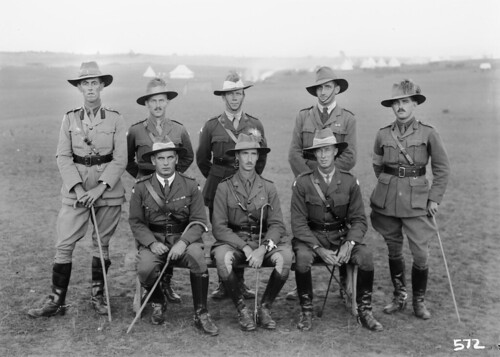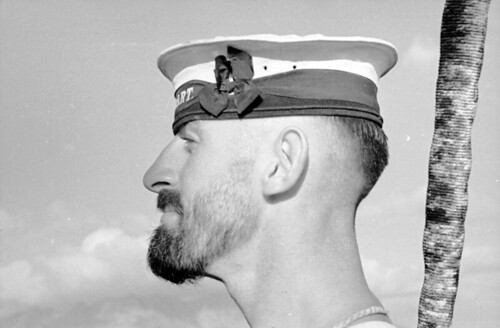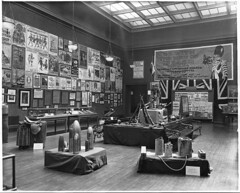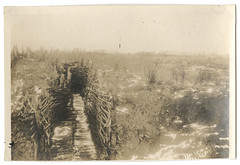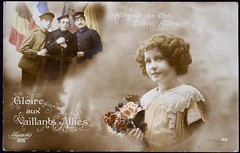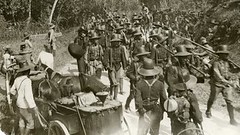By the time of the Great War, photography was entering a robust seventy-fifth year. The cumbersome equipment and demanding processes of earlier battlefields had been replaced by the comparatively effortless Speed Graphic and Kodak Brownie cameras, collodion dry plate and gelatin roll film. Perhaps more importantly, technological innovations such as chromolithography and rotogravure had made possible the mass-production of images that brought the apparent immediacy and inclusivity of the photograph to the offices, parlors and breakfast tables of millions in a quantity that presaged the deluge of pictures we experience today. Postcards, stereoviews, the picture press and the ubiquitous snapshot album carried news and sentiment to and from the front and the domestic sphere.
Parallel to these advances came an increased degree of sophistication about the power and use of images. World War I remains the most controlled war of images we have seen to date; in most cases, press access and publication were restricted and censored, and the personal possession of cameras by ordinary soldiers was strictly prohibited. Official photographs showed the heroism of “us” and the bestial nature of “them” to eager audiences on both sides, even as forbidden snapshots revealing unimaginable horrors were smuggled out of the trenches, and medical documents detailing what mustard gas, bombs and shrapnel can do to the faces and limbs of seventeen year olds were made, studied and carefully filed away.
Today these pictures feel curiously like memory, though it is the photographs themselves we remember rather than the people and events they depict. Indeed, these now worn and faded scraps of paper stand in as metaphors for what we can no longer know firsthand. Walter Benjamin reminds us “every image of the past that is not recognized by the present as one of its own concerns threatens to disappear irretrievably.” This is why we invite you to look, and look hard, at these fragments assembled from photograph collections around the world. From them we may piece together some notion of this, our first Modern trauma, and find in them, perhaps, the roots and resonances of our current dilemmas.
– Alison Nordström, Curator of Photographs, George Eastman House.
We’d like to welcome the Australian War Memorial and the Imperial War Museum into The Commons on Flickr today. November 11, 2008 is the 90th anniversary of Armistice Day, the day the First World War came to an end.
In addition to the two newest members, we wondered what all the current members of The Commons might have to share from their collections to mark the day. It turns out that many of them had photographs (and postcards) to share with us, both from the War itself, and from various ceremonies in the following years, marked with the “Armistice Day” tag…
Thank you very much to the Australian War Memorial, the Imperial War Museum, The Library of Congress, Musée McCord Museum, The Library of Virginia, the Nationaal Archief, George Eastman House, and the State Library of New South Wales, and to Alison Nordström – our guest blogger – for producing a unique online collection to observe this day in history.
